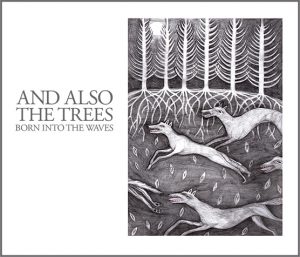
Rawlence, who was born in 1974, notes that more than 40 percent of British wildlife has been annihilated by industrial agriculture and urbanization within his lifetime. Yet the destruction of forests jeopardizes the lives of countless plants, animals, and people. He rightfully asserts that the purpose of land is to sustain life at the most basic level, trees are needed to capture carbon and produce oxygen. “But practically and emotionally it seems we will do everything we possibly can to avoid accepting the facts.” “Rationally, we know what is happening and what is likely to happen,” Rawlence writes of escalating climate change. This enclosure of common land was a prerequisite for colonial rule and industrial capitalism, Rawlence writes, which in turn precipitated our carbon-driven crisis.

He points to the decisive turn when humans began treating forests not “as sacred places of wonder, mystery, and sustenance” but instead as a means to build wealth. Rawlence, a former researcher for Human Rights Watch in Africa and co-founder of the environmentally-focused Black Mountains College in Wales, posits that nature itself isn’t the problem, but rather our relationship to it. Who wouldn’t like to believe that things aren’t as bad as they seem? “But practically and emotionally it seems we will do everything we possibly can to avoid accepting the facts.” It’s a broad statement, but the sentiment is relatable. “Rationally, we know what is happening and what is likely to happen,” he writes of escalating climate change. (The first person we’re introduced to arrives around 30 pages in.) The book’s many detailed descriptions of the natural world are coupled with contemporary climate science, making the process of learning about the forest’s inner workings both awe-inspiring and ineffably sad. Humans, of course, play a key role, but Rawlence attempts to steer away from anthropocentrism. It would be a misrepresentation to say his book is about trees rather, they’re the protagonists in a larger story about geology, climate, and the shape of things to come. “This is the place to look for a glimpse of what, after the great transformation currently unfolding on Earth, will remain,” he writes. He starts in his backyard in Wales, then takes the reader east in a vast circle lining the northern rim of the globe.

After narrowing down the trees of the boreal to six principal species with unique geographic concentrations - Scotland’s Scots pine, Norway’s downy birch, Russia’s Dahurian larch, Alaska’s spruce, Canada’s balsam poplar, and Greenland’s mountain ash - he sets out to visit various points in the treeline. The scope of all this environmental change is complex, but Rawlence’s approach to examining it is relatively straightforward. Historically forests regenerate after such burnings, but the frequency of fires and the development of warmer, drier conditions are hindering this process.

In some areas, trees are struggling to grow and photosynthesize, while in others they are catching on fire and releasing even more planet-warming carbon into the atmosphere. As the trees propagate in formerly barren northern regions, microbial activity is warming the soil further, thawing frozen earth containing large quantities of greenhouse gas.Īt the same time, the boreal’s ability to sequester carbon is declining, as trees especially effective at this crucial task are being replaced by less efficient species. While southern regions of the boreal have been marred by deforestation, tundra - the typically cold and treeless landscape ringing the North Pole - has begun transforming into woodland. The implications of this shift are troubling. Martin’s Press, 320 pages).Īs the melting of permafrost and Arctic sea ice hastens atmospheric warming, the boreal is pushing farther north. BOOK REVIEW - “The Treeline: The Last Forest and the Future of Life on Earth” by Ben Rawlence (St.


 0 kommentar(er)
0 kommentar(er)
